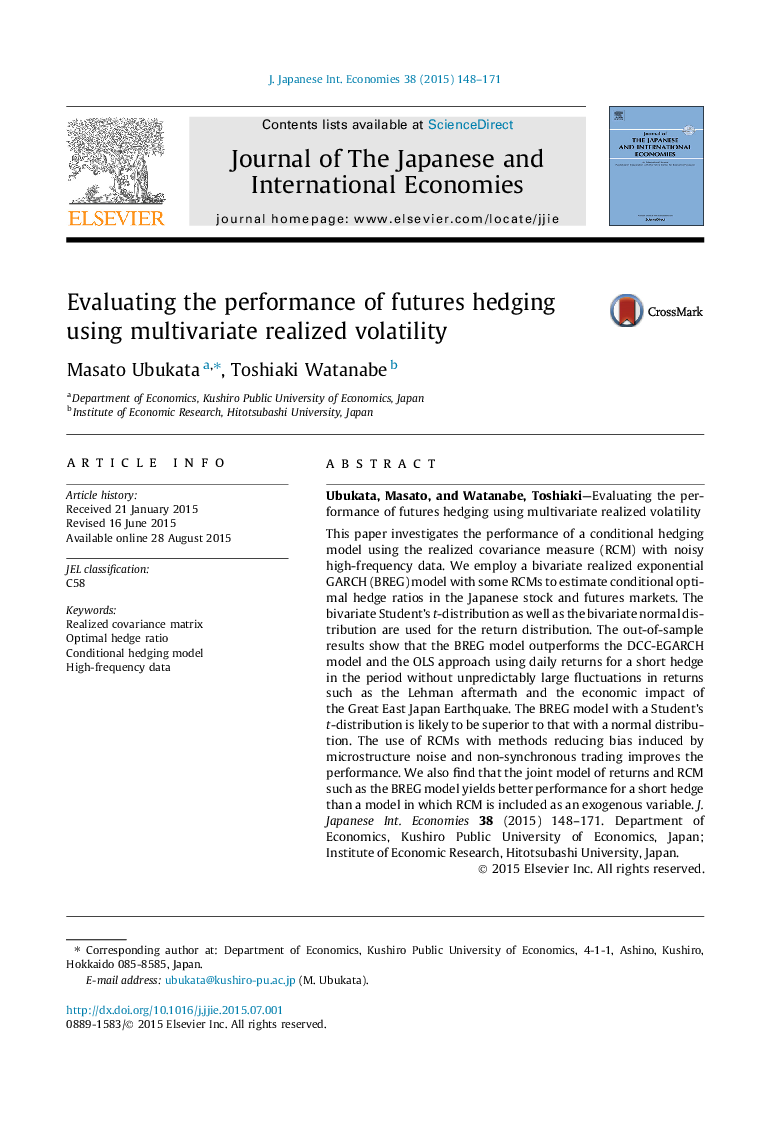| Article ID | Journal | Published Year | Pages | File Type |
|---|---|---|---|---|
| 965147 | Journal of the Japanese and International Economies | 2015 | 24 Pages |
Abstract
This paper investigates the performance of a conditional hedging model using the realized covariance measure (RCM) with noisy high-frequency data. We employ a bivariate realized exponential GARCH (BREG) model with some RCMs to estimate conditional optimal hedge ratios in the Japanese stock and futures markets. The bivariate Student's t-distribution as well as the bivariate normal distribution are used for the return distribution. The out-of-sample results show that the BREG model outperforms the DCC-EGARCH model and the OLS approach using daily returns for a short hedge in the period without unpredictably large fluctuations in returns such as the Lehman aftermath and the economic impact of the Great East Japan Earthquake. The BREG model with a Student's t-distribution is likely to be superior to that with a normal distribution. The use of RCMs with methods reducing bias induced by microstructure noise and non-synchronous trading improves the performance. We also find that the joint model of returns and RCM such as the BREG model yields better performance for a short hedge than a model in which RCM is included as an exogenous variable.
Related Topics
Social Sciences and Humanities
Economics, Econometrics and Finance
Economics and Econometrics
Authors
Masato Ubukata, Toshiaki Watanabe,
